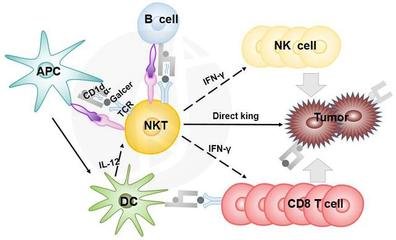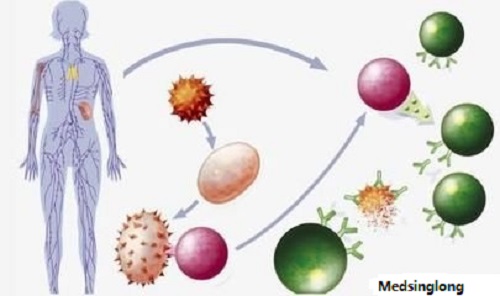

MSL exclusive Medical equipment knowledge sharing!
Watching a lot of medical equipment news and learning some knowledges of medical equipment. All the hardworking just to be a profesional medical equipments supplier and service better for you. We hope the information about medical we provide could helps you to choose your suitable products.
|
Autoimmune disease classification - Medsinglong Clicks:Updated:2018-05-29 14:05:02 |
|
Autoimmune disease can be divided in to two classification: Organ-specific autoimmune disease and systemic autoimmune disease.
Organ-specific autoimmune disease
Pathological damage and dysfunction of tissues and organs is limited to an organ targeted by antibodies or sensitized lymphocytes. Mainly chronic lymphoid thyroiditis, hyperthyroidism, insulin-dependent diabetes mellitus, myasthenia gravis, chronic ulcerative colitis, pernicious anemia with chronic atrophic gastritis, pulmonary bleeding nephritis syndrome (goodpasture syndrome), pemphigus vulgaris, Pemphigus, primary biliary cirrhosis, multiple cerebrospinal sclerosis, acute idiopathic polyneuritis, etc., among which common ones will be described separately in each system disease.
Systemic autoimmune disease
Due to the extensive deposition of antigen-antibody complexes on the vascular wall and other causes of systemic multiple organ damage, systemic autoimmune diseases are known. Also known as collagen or connective tissue disease, this is due to immune damage caused by vascular wall and interstitial fibrinoid necrotizing inflammation and subsequent production of multiple organ collagen fiber proliferation. In fact, in terms of ultrastructure and biochemical metabolism, most of the collagen fibers do not have primary changes.

The common autoimmune diseases are the following:
1 Systemic lupus erythematosus. More common in middle-aged women. It is characterized by butterfly-like vesicular rash and extensive visceral lesions in the facial area, and organs that are susceptible to invasion such as heart, kidney, lung and liver. "Typical" cases are acute, with fever, joint pain, lymphadenopathy, renal failure, etc., and can be fatal. However, most of the progress has been slow.
The main autoantigen of this disease is deoxyribonucleic acid, especially denatured deoxyribonucleic acid, in addition to nuclear protein and blood cells. Some drugs used to treat non-systemic lupus erythematosus can lead to the production of anti-nuclear antibodies. Among these drugs are hydralazine, procainamide, isoniazid, methyldopa and the like. Systemic lupus erythematosus caused by drugs is less likely to cause kidney damage. In other cases, there are almost all degrees of renal impairment, which eventually leads to renal failure.
2 Rheumatoid arthritis. It occurs in middle-aged women, but it can occur at any age. It is a systemic disease. The lesions mainly invade the joints. Joint symptoms generally reoccur, and with the increase in the number of attacks, joint destruction becomes more and more serious, eventually resulting in varying degrees of dysfunction and deformity. In addition to joints, rheumatoid nodules, arteritis, pericarditis, scleritis, lymphadenitis, hepatosplenomegaly, and neuropathy are also rare. The disease can be diagnosed according to the typical clinical process and inspection findings. X-ray examination is indispensable to confirm joint disease. The final outcome of the latter is joint fusion and loss of activity. Rheumatoid factor can be found in the patient's serum. The disease depends mainly on drug treatment, commonly used drugs are salicylic acid, chloroquine or hydroxychloroquine, corticosteroids and so on. Any person with a short course of disease and good treatment response may not develop into a chronic process. If the course of illness exceeds 3 years, it is generally difficult to cure.
3 Systemic vasculitis. This includes a series of lesions characterized by damage to the vessel wall due to chronic inflammatory reactions in the vessel wall. More common is nodular polyarteritis. About 70% of the disease is male. The lesions mainly invade the middle arteries and intramuscular arterioles, resulting in narrow lumens. Kidney and heart are the most frequently violated organs. Lesions can also invade the digestive tract, peripheral nerves, skin, lungs, brain, liver, spleen, and testis. The initial symptoms are often fever, fatigue, weight loss, and symptoms of the affected organ. The use of corticosteroids or cytotoxic agents can relieve symptoms. Renal lesions often die of renal failure.
4 Scleroderma. It is characterized by excessive proliferation of fibrous tissue in the skin and occurs in women. As the skin becomes thicker and harder, the appearance is tightly tied and shiny, and the patient's face is dull and lacks expression. There are two types of scleroderma, one is a limited type, skin lesions are limited to the skin; the other is a systemic type, can be related to the section, gastrointestinal, renal, cardiovascular, lung and other diseases. Joint movement disorders and dysphagia are common symptoms. Antinuclear antibodies, rheumatoid factor, etc. can be found in serum. There is no effective treatment for this disease. Penicillamine may have some effects on localized scleroderma.

5 Pemphigus, a skin disease characterized by superficial lesions of the skin. Autoantibodies against skin antigens can be found in the patient's blood. There are different types of pemphigus, and some of the lesions are self-limiting and can be relieved by themselves; some with visceral lesions can be rapidly fatal. Treatment with corticosteroids and immunosuppressive agents is effective but recurs easily.
6 Dermatomyositis, an autoimmune disease characterized by skin and muscle atrophy. The patient feels extremely weak due to muscle atrophy. Another feature is often associated with malignant lesions, particularly in elderly patients. Therefore, these patients should strive to find the presence of malignant lesions. Diagnosis can be based on muscle biopsy, electromyography, serum muscle enzymes, and autoantibody tests. Treatment with corticosteroids and immunosuppressive agents has a certain effect.
7 Mixed connective tissue disease, refers to the case of a variety of connective tissue disease. The clinical manifestations are different combinations of rheumatoid arthritis, systemic lupus erythematosus, scleroderma, dermatomyositis, and the like. There is a high titer of antinuclear antibodies in the blood. Most patients respond well to corticosteroid treatment and the disease has a tendency to develop systemic scleroderma.
8 Autoimmune hemolytic anemia, the patient's serum contains antibodies against their own red blood cells. Some of these antibodies can condense red blood cells, and some can co-dissolve red blood cells with complement. According to the appropriate temperature of the autoantibody effect, these antibodies can be divided into two categories: the so-called hot antibodies (the most appropriate temperature for the effect is 37 °C, the degree of anemia in patients is not the same, light clinical symptoms are not obvious, heavy may be associated with jaundice With acute hemorrhagic symptoms, corticosteroid therapy is effective) and so-called cold antibodies (the optimal temperature is below 37°C, which acts by agglutinating red blood cells and activating complement, which responds to warmth, rest, and necessary transfusion therapy Good, and poor response to corticosteroid treatment).
9 Thyroid autoimmune disease, thyroid autoimmune disease is a local autoimmune disease. Such as Hashimoto's thyroiditis (accompanied by thyroid enlargement of the thyroid diffuse destructive inflammatory lesions, thyroid autoantibody titers, goiter, and no function is too strong is the basis for diagnosis), primary mucinous edema (also Anti-thyroid antibodies can be measured, but the titer is lower. Eventually lead to thyroid atrophy, which may be the final stage of Hashimoto's thyroiditis development), hyperthyroidism (clinical manifestations of goiter, tremor, exophthalmos, and increased basal metabolic rate) Due to the presence of thyroid antibodies, hyperplasia of the glandular tissue and hyperthyroidism are seen. The thyroidectomy or radioactive iodine treatment is effective.
10 Ulcerative colitis, more common in women. It mainly affects the rectum and sigmoid colon and presents as a shallow ulcer. Recurrent illness, causing intestinal wall connective tissue hyperplasia. May be genetically related, some types of E. coli (O14) antigen and human colon mucosal antigen similar to these bacterial infections may stimulate the body's immune response, causing colon damage.
|

Address:85th, Baiyun Road, Shiqiao Street, Panyu District, GuangZhou City Sitemap
Tel:+86-20-84899760 Email:Cindy@medmsl.com / cindy@medicalequipment-msl.com Skype:msl_saler01 Mob:+86 138 2644 8637

Connect us in Whatsapp or Facebook Messenger

Messenger
